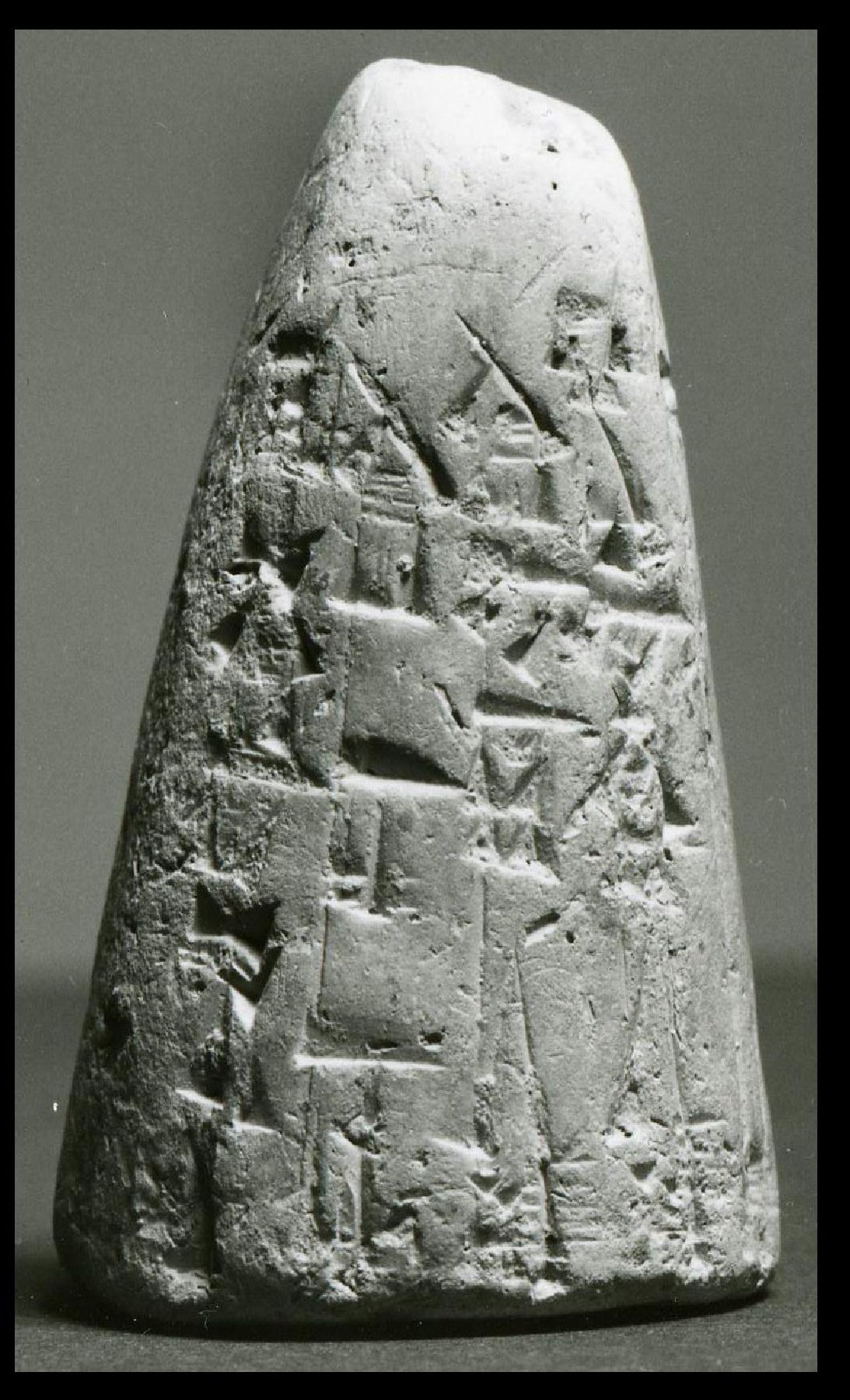Cone of Sin-Kashid
(Ancient Near East )
The comparatively large cuneiform characters covering this votive cone refer to the building of a royal palace in Uruk (modern Warka) by Sin-Kashid, ruler of Uruk in the mid-19th century BCE. He also refers to himself as ruler of the Amnanum, an Amorite tribe that also had links to Babylon and as far north as Mari. More than one hundred examples of this text survive, appearing on bricks, tablets, and cones.
Clay cones and nails were inscribed in the name of a ruler of a Mesopotamian city-state to commemorate an act of building or rebuilding, often of a temple for a specific deity. Deposited in the walls or under the foundations of these structures, the words of the texts were directed at the gods but would be found by later restorers.
Inscription
Provenance
Provenance (from the French provenir, 'to come from/forth') is the chronology of the ownership, custody, or location of a historical object. Learn more about provenance at the Walters.
Sadie Jones (Mrs. Henry Walters), New York, [date and mode of acquisition unknown]; Sale, Joseph Brummer, New York, 1941 [Brummer inv. no. N4999]; Walters Art Museum, 1941, by purchase.
Geographies
Iraq (Uruk) (Place of Origin)
Measurements
H: 2 3/4 × Diam: 1 9/16 in. (7 × 4 cm)
Credit Line
Museum purchase, 1941
Location in Museum
Not on view
Accession Number
In libraries, galleries, museums, and archives, an accession number is a unique identifier assigned to each object in the collection.
In libraries, galleries, museums, and archives, an accession number is a unique identifier assigned to each object in the collection.
48.1804


